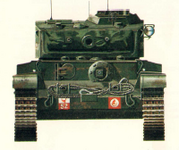They had that in spades alreadyThe army also didn't want two different types the same vehicle doing the same job.
The Wright powered M4 and M4A1, the Diesel M4A2 , Ford V8 M4A3 all did the same job, and that's leaving out the M4A4 for lend lease
Then the mix of 75mm, 76mm and 105mm armament in a variety of different turrets.




